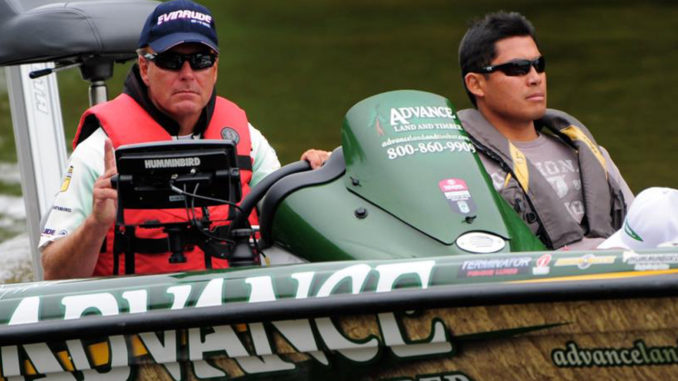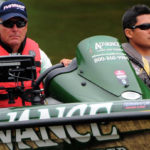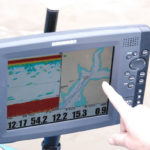
Learn your electronics and lakes at same time
When it comes to deer hunting, none of us mind spending a few days in the woods before the season, doing our scouting, setting up trail cameras, getting a bead on where that big buck might show up.
So who wouldn’t mind doing some preseason scouting in your bass boat? December is a big month here in South Carolina to get out on your local lake and learn more about it so you’ll be ready when February and March roll around and the fish get ready to bite.
We have some nice days in December, some 60-degree days when you can get out and catch a few bass, but it’s much more important to use your time on the water to get ready for the spring.
First of all, most of our reservoirs are low, if not at their lowest levels of the year; the water will start to come back up with the rains in January and February. December is the time to see what’s out there that’s normally under the surface. Later in the month, it’s especially good, because that’s when a lot of people have taken their Christmas trees down and are putting them out as brush piles. There’s not much boat traffic on the lake, so if you want to put your own brush out — if that’s legal on your lake — you might be able to do it without being seen. You want to look and find brush that you normally can’t see.
On Wateree, Clarks Hill, Murray and Hartwell, most of them will be low enough in December that you can see stuff, learn what it is, then come back and fish it in February and March when you want to be fishing, not studying.
The second part of this is that you want to be working with your electronics the entire time. Let’s face it, electronics are expensive, no doubt about, so you owe it to yourself to learn how to use them and get the most out of them. So here’s how I go about a December scouting trip.
The first thing I want to do is go to places where I’ve caught fish so I can try to figure out exactly what they were on or why they were on a certain place. I want to see what’s there. Most places, you can look at them with the water down and say, “Ah, that’s why they were there.” If you can’t pick out any one thing, then you know they were probably there because of the current that was there.
Next, then I go looking for new stuff. I have two electronic units on my console, a Humminbird 1198 on the console and a 998 on a rail mount. I start out with the 1198, and I like to put a map up on half the screen so I can follow the contour I’m searching. Then, I’ll be looking at the down-imaging feature on the other side of the screen. On the 998 unit, I can be looking at the side-imaging feature.
Our electronics are light years better than they were 10 years ago, and they’re such a big part of our fishing today, that you have to know how to use them. Scouting is one way to do that. When I see something on the side-imaging unit, I’ll mark it with a waypoint, then move back over it and look at it on the down-imaging unit. I want to know what I’m looking at, then see what it looks like from above, because when the water comes back up I’ll know what to look for, both when I’m looking for that object, and when I happen to see something that looks just like it. It’s a great way to see with your eyes what’s down there, then see what it looks like on down-imaging and side-imaging, then go back and look at it when the water is up and see it again. Patterning fish is the same whether you’re looking at your electronics and idling over it, or catching them and trying to go to similar spots.
One thing you really want to teach yourself about your electronics is how to be able to learn what different bottom compositions look like. Everybody can look at a boulder the size of a Volkswagen and know it would be a great place to fish, but a lot of people overlook different kinds of soils and rocks. You can see clay, small rocks, chunk rock, pea gravel or pebbles. You find those places with your eyes with the water down, then go over them with your electronics and learn what they look like on your screen, learn to tell the difference between a hard bottom like clay or a soft, muddy bottom.
The changes can be very subtle, but if you learn what you’re looking for, you can usually figure them out. The big thing is to go over ‘em and learn what the change between two kinds of bottoms looks like on your electronics. Then, you’ll be able to find spots like that with your depth finder when the water is up. You’ll be able to see the edge between chunk rock and pea gravel or pea gravel and clay, or clay and sand. Then, when you find fish on one kind of bottom in March, you can look around and find the same kind of bottom with your electronics and build a pattern.






Be the first to comment